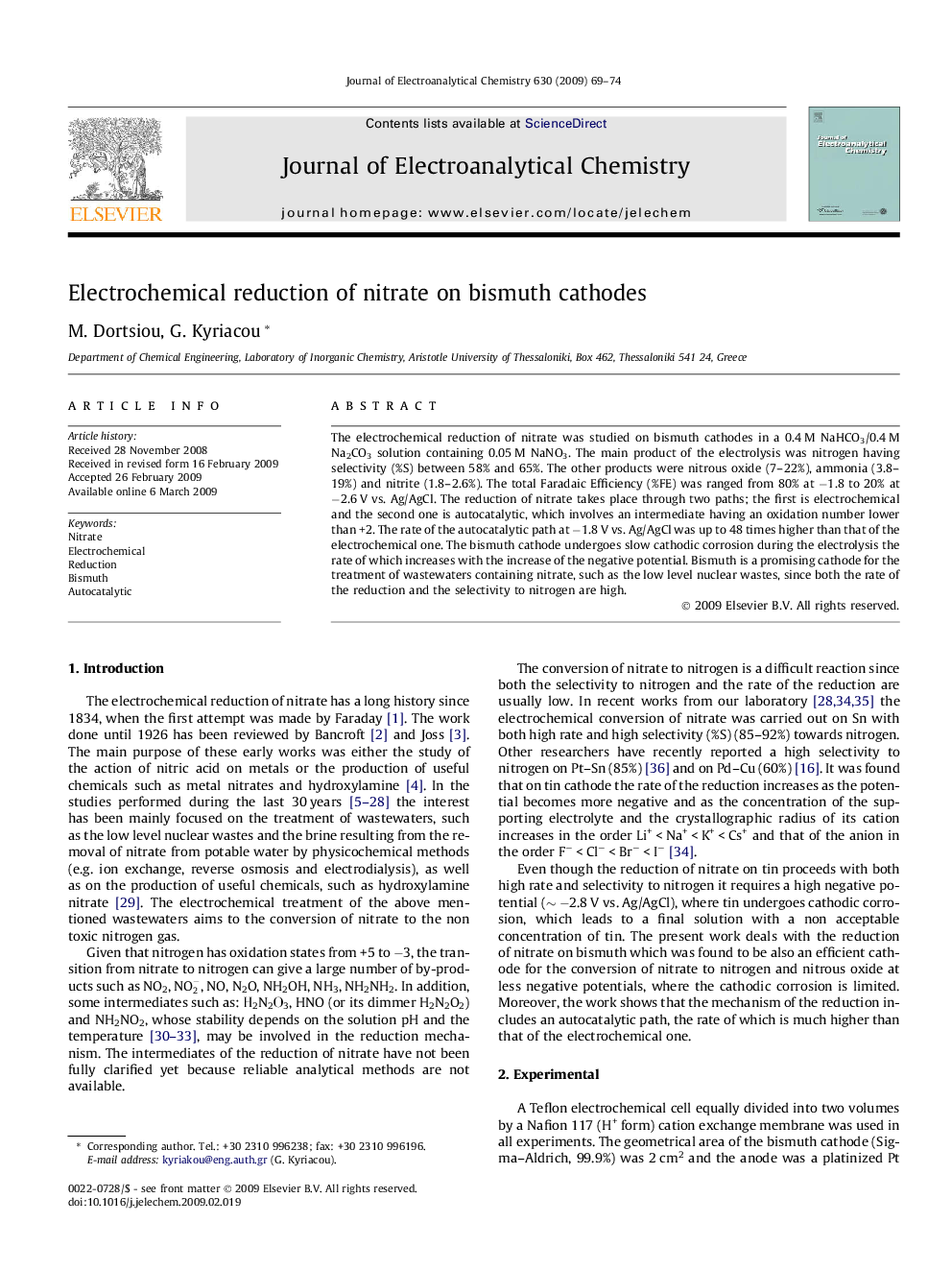| Article ID | Journal | Published Year | Pages | File Type |
|---|---|---|---|---|
| 220414 | Journal of Electroanalytical Chemistry | 2009 | 6 Pages |
The electrochemical reduction of nitrate was studied on bismuth cathodes in a 0.4 M NaHCO3/0.4 M Na2CO3 solution containing 0.05 M NaNO3. The main product of the electrolysis was nitrogen having selectivity (%S) between 58% and 65%. The other products were nitrous oxide (7–22%), ammonia (3.8–19%) and nitrite (1.8–2.6%). The total Faradaic Efficiency (%FE) was ranged from 80% at −1.8 to 20% at −2.6 V vs. Ag/AgCl. The reduction of nitrate takes place through two paths; the first is electrochemical and the second one is autocatalytic, which involves an intermediate having an oxidation number lower than +2. The rate of the autocatalytic path at −1.8 V vs. Ag/AgCl was up to 48 times higher than that of the electrochemical one. The bismuth cathode undergoes slow cathodic corrosion during the electrolysis the rate of which increases with the increase of the negative potential. Bismuth is a promising cathode for the treatment of wastewaters containing nitrate, such as the low level nuclear wastes, since both the rate of the reduction and the selectivity to nitrogen are high.
